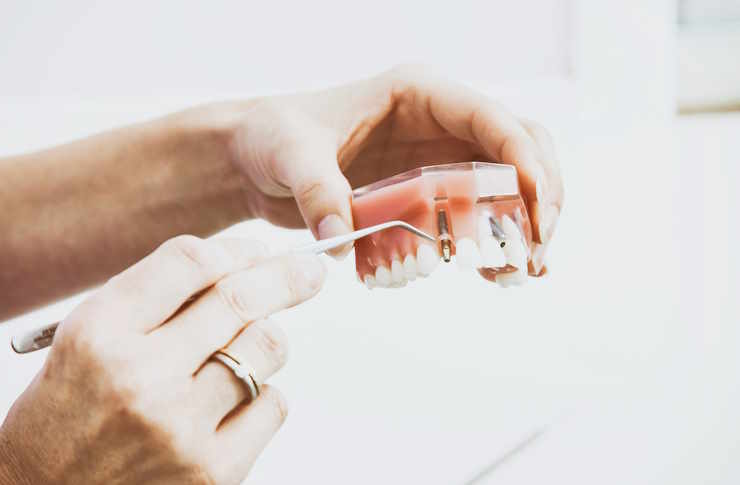Screwless Dental Implants in the United States in 2025: Minimally Invasive, Emerging Tooth Restoration Options
By 2025, screwless dental implants are emerging as an alternative to traditional implants in the United States. They aim to offer less invasive procedures, faster recovery, and improved aesthetics. This article explains how they work, potential benefits, limitations, and what patients should consider.

What are screwless dental implants?
Screwless dental implants are a newer approach to implant-supported tooth replacement. Like traditional implants, a biocompatible post (commonly titanium) is placed into the jawbone to act as an artificial root. Instead of attaching the prosthetic tooth with a mechanical screw, the prosthesis is bonded or cemented directly to a specially designed implant surface or abutment. The implant still relies on osseointegration (bone bonding with the implant surface) for long-term stability.
Evidence about clinical outcomes compared to screw-retained implants is still emerging. Some laboratory and limited clinical reports describe advantages in specific situations, but high-quality long-term studies are not yet widely available.
Potential benefits (what has been reported)
- Less visible hardware: Without an access hole for a screw, the prosthesis can offer an uninterrupted cosmetic surface, which may be advantageous for front teeth.
- Simplified prosthesis design in some workflows: Eliminating a screw access channel can simplify crown contours in certain systems.
- Potential for reduced mechanical screw-related complications: By removing the screw component, screw-related loosening or fracture is avoided; however, other complications (e.g., cement failure, peri-implantitis) remain possible.
Note: Reported benefits should be viewed cautiously. Comparative clinical evidence is limited, and reported advantages may depend on specific implant systems, clinician experience, and case selection.
How screwless implants are placed (typical steps)
- Evaluation and imaging: Comprehensive oral exam and imaging (e.g., CBCT) to assess bone volume, anatomical risks, and treatment planning.
- Surgical placement: A titanium implant is positioned in the jawbone under local anesthesia. Implant designs vary; some systems are engineered for bonding rather than screw retention.
- Healing and osseointegration: A healing period follows while the implant integrates with bone.
- Prosthetic attachment: The crown or prosthesis is bonded or cemented to the implant or to a special abutment surface instead of being mechanically screwed on.
- Follow-up care: Regular dental checkups and hygiene are essential to monitor soft tissues, prosthesis integrity, and peri-implant health.
Clinical protocols vary by system and provider. Ask your dentist what specific implant system and retention method they plan to use.
Suitability and important considerations
Screwless implants are not appropriate for every patient. Key factors include:
- Bone quantity and quality: Patients with insufficient bone may require grafting or alternative implant approaches.
- Oral health: Active periodontal disease or untreated infections must be managed before implant placement.
- Retrievability: Screw-retained prostheses are generally easier to remove and service; bonded systems may be less retrievable, making repair or removal more complex.
- Cement-related risks: Excess cement has been associated with peri-implant inflammation; careful cementation protocols are essential.
- Evidence and long-term data: Long-term comparative data on failure modes, complications, and maintenance needs are limited. Patients should weigh potential benefits against uncertainties.
- Cost and availability: Costs vary widely by provider, location, and implant system. Claims about widespread affordability are not yet well substantiated.
A qualified implant dentist or oral surgeon should perform a personalized assessment and explain the advantages and limitations of screwless versus screw-retained options for a given case.
Comparison with traditional screw-retained implants (overview)
| Aspect | Screwless (bonded/cemented) | Traditional screw-retained |
|---|---|---|
| Attachment method | Bonding/cement to implant or abutment | Mechanical screw |
| Retrievability | Often less easily retrievable | Generally retrievable for repair/maintenance |
| Aesthetics | Can avoid visible screw access holes | May have screw access, though often managed esthetically |
| Mechanical screw-related issues | Eliminates screw loosening/fracture | Risk of screw loosening or fracture exists |
| Cement-related risks | Risk of excess cement and peri-implant inflammation | Lower risk from cement but screw holes require sealing |
| Clinical evidence | Emerging, limited long-term comparative data | Extensive long-term data available |
| Cost considerations | Varies by system; affordability claims not universally substantiated | Widely available; costs vary |
Discuss these trade-offs with your clinician; the best choice depends on individual anatomy, treatment goals, and maintenance priorities.
Adoption and availability in the U.S. (2025)
As of 2025, several implant systems and clinics in the United States offer screwless or bonded implant solutions, often integrated with digital planning and CAD/CAM prosthetics. Adoption is growing but is not yet universal. Availability, clinician experience, and pricing vary regionally. Patients should research providers, ask about clinical experience with the specific system, and request outcomes data where available.
Looking ahead
Research is ongoing to improve implant surface technologies, bonding materials, and clinical protocols. Future high-quality, long-term clinical studies are needed to clarify comparative outcomes, complication rates, maintenance needs, and cost-effectiveness relative to screw-retained implants. For many patients, screwless implants represent an emerging option worth discussing with a qualified implant professional.
Disclaimer: Claims about widespread adoption, clinical superiority, or affordability of screwless implants are not yet fully supported by high-quality, long-term evidence. Patients are advised to consult qualified dental professionals for personalized evaluations and up-to-date information.
Sources
- Oakleaf Manor. “Understanding What Are Screwless Dental Implants and Their Benefits.” https://www.oakleafmanor.com/what-are-screwless-dental-implants/
- Blyss Dental. “Top 8 Things to Consider When Getting All-on-4 Dental Implants.” https://blyssdental.com/all-on-4-dental-implants/




